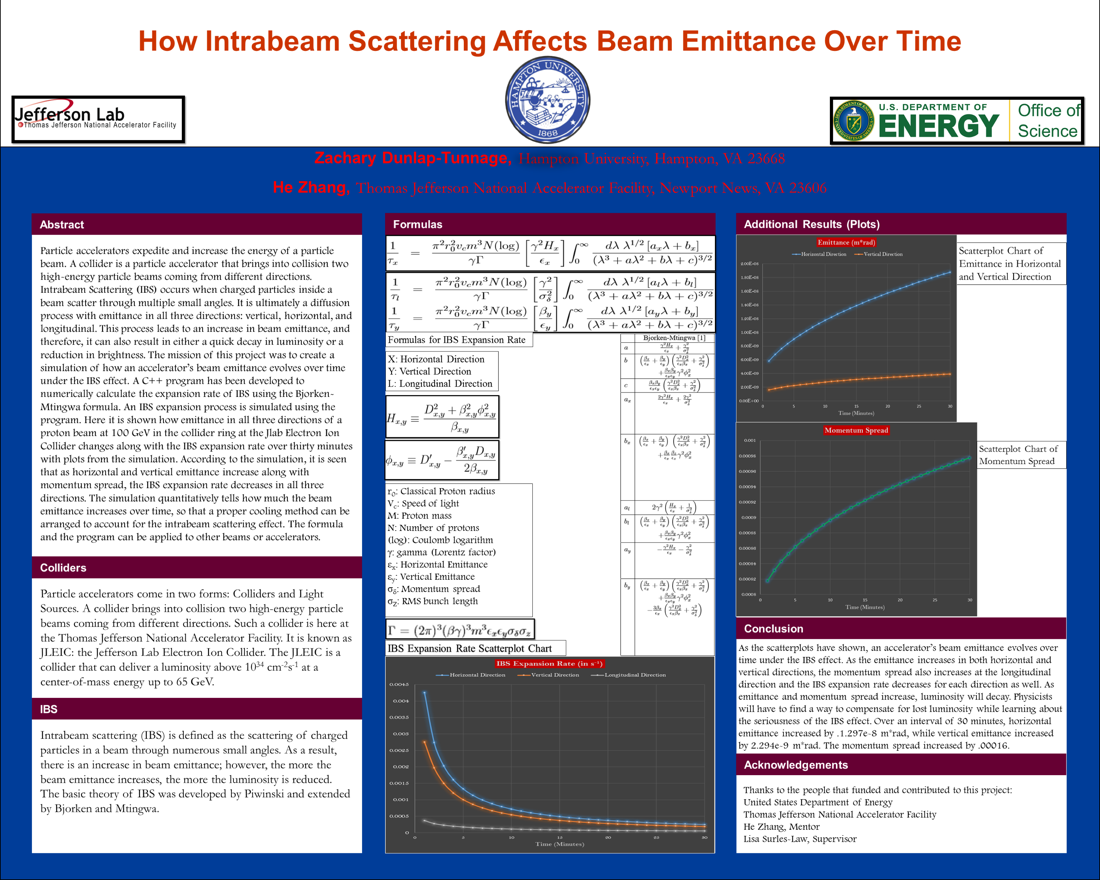Undergraduate Research at Jefferson Lab
How Intrabeam Scattering Affects Beam Emittance Over Time
Student: Zachary Dunlap-Tunnage
School: Hampton University
Mentored By: He Zhang
Particle accelerators expedite and increase the energy of a particle beam. A collider is a particle accelerator that brings into collision two high-energy particle beams coming from different directions. Intrabeam Scattering (IBS) occurs when charged particles inside a beam scatter through multiple small angles. It is ultimately a diffusion process with emittance in all three directions: vertical, horizontal, and longitudinal. This process leads to an increase in beam emittance and therefore, it can also result in either a quick decay in luminosity or a reduction in brightness. The mission of this project was to create a simulation of how an accelerator's beam emittance evolves over time under the IBS effect. A C++ program has been developed to numerically calculate the expansion rate of the IBS effect using the Bjorken-Mtingwa formula. An IBS expansion rate process is simulated using the program. Here it is shown how emittance in all three directions of a proton beam at 100 GeV (or gigaelectron-volts) in the collider ring of the Jlab Electron Ion Collider (JLEIC) changes along with the IBS expansion rate over thirty minutes with plots from the simulation. According to the simulation, it is seen that as emittance in all three directions increases, the IBS expansion rate decreases in all three directions. The simulation quantitatively tells how much the beam emittance increases over time, so that a proper cooling method can be arranged to account for the intrabeam scattering effect. The formula and the program can be applied to other beams or accelerators.

Citation and linking information
For questions about this page, please contact Education Web Administrator.
